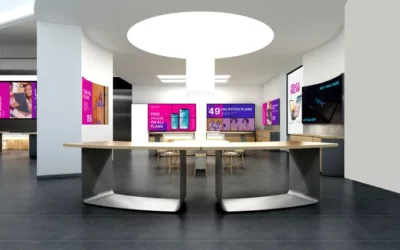
The Growth of Digital and Virtual Banking
For the foreseeable future, people may be reluctant to go out frequently to visit banks in person, necessitating a shift to virtual or digital modes of communication wherever possible — in fact, in Asia-Pacific 78% of people now prefer digital or virtual banking. In Singapore the pandemic has accelerated the adoption of digital banking, with 80% of Singaporeans likely to continue to use online banking even after the pandemic.
Despite this trend, the CEO of DBS Bank believes that physical banks are still needed for branding and last-mile services. So, banks are not likely to see a drastic drop in footfall. However, safety continues to be a top priority, and a lack of preparedness in communication can hamper a bank’s image. For banks, communication strategies should now focus on three things: reassuring customers of safe banking experience, attracting new customers, and coordinating their workforces to comply with new social distancing norms.
DBS Bank, Oversea-Chinese Banking Corp (OCBC Bank) and United Overseas Bank hold 60% of the Singapore banking market. The entry of 21 new contenders in the digital banking space will challenge their legacy. Now is the time for Singapore banks to focus on communicating the right messages to their user base and leveraging online modes of communication. This may involve reaching out to customers via online banking portals and mobile or in-app communications, and evolving the in-branch banking experience through technology.
For example, digital signage can play a key role in communicating with customers at retail banking branches and ATMs, functioning as a welcome screen at the first touchpoint and not only reinforcing branding, services and important financial details, but also helping to communicate essential virus-related information.
Digital Signage to Show Health and Safety Measures Undertaken
As people remain cautious as they move about in public, banks need to take steps to assure them of safe banking experience. Digital signage deployed at the bank’s entrance can put customers’ minds at ease by showing frequent sanitisation of the premises, layout changes to promote social distancing, and implementation of virtual technology (for example, occupancy management solutions) to prevent direct contact. Banks can also communicate how they are protecting vulnerable customers. For example, some banks may prioritise senior citizens during certain hours, and digital signage at the entrance can be used to communicate this.
Communicate Safety Procedures and Rules
Entrance digital signage can help guide bank customers on the new processes that need to be followed inside the branch. For example, a bank could display video content on their digital signage to show customers how to move about safely inside the branch, as well as inform them about the locations of sanitiser machines throughout the bank. Where entry and exit points have been changed to follow social distancing norms, digital signage can be used to communicate the changes.
Digital signs are an important tool to indicate other important measures customers need to take before entering the bank, such as:
wearing a mask
complying with necessary check-in and check-out procedures
undergoing temperature screening
providing data on recent travel history
What people expect from businesses now is assurance. Digital signage can help banks show they are serious about ensuring customer safety.
Encourage Other Modes of Banking
With the rise of digital banking, banks can also use strategically placed digital signage to inform customers about other modes of banking and financial services. Digital signage will play a key role in the marketing strategy of banks in the near future.
Digital signage can be combined with other marketing technology to transform the banking experience. For example, digital screens can be used for video conferencing within the bank premises, enabling customers to interact with bank staff without having to enter any cabin or come in close contact. More evolved options include integrating digital signage with IoT technology to trigger video and messaging when users come within a specific range of the signage, and to maintain social distance in queues. This not only creates a richer customer experience, it helps maintain safety inside the bank branch.
Banks in Singapore have had to reposition themselves to flourish during the pandemic, with many introducing new technologies to attract and retain customers. For example, DBS Bank’s new face verification technology encourages customers to make the switch to digital banking. Where a bank introduces a new technology like this, they can maximise the results by marketing it through digital signage at key locations to attract more customers.
Some banks may have scaled down their operations to comply with circuit breakers and new social distancing norms. Digital signage is an essential tool to inform customers about possible shutdowns or changes in operations, while also offering a way to redirect customers online or allow them to interact remotely with a consultant or customer relationship team. Bank employees can also benefit from digital signage by way of using in-branch digital signs to conduct remote workshops and group discussions for their customers and with internal teams.
Conclusion
Banking is an essential service, and people are looking for a safe and seamless banking experience. Banks need to adapt their service delivery experience to keep customers and staff safe. Digital signage can be a critical tool in ensuring a seamless customer experience and displaying the right messaging to assure customer safety, while also promoting alternatives and introducing new technology to attract and engage customers better.
Scala’s range of digital signage solutions for the finance market can help banks evolve the in-branch experience while also ensuring public safety for banking customers during the COVID-19 pandemic.





